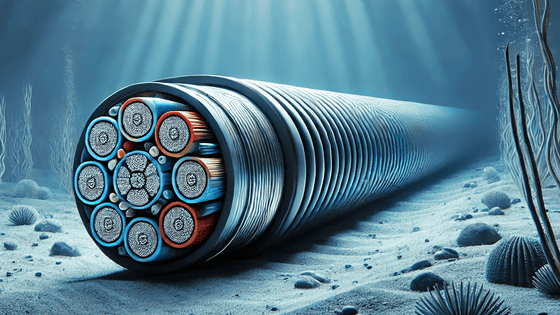Why do undersea cable cuts continue to occur around the world?
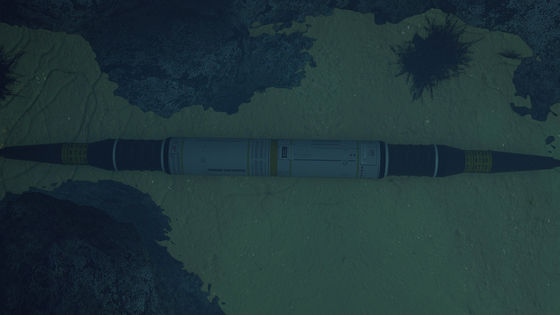
The Internet is supported by cables that run across the ocean floor all over the world, but the Internet is often disrupted when submarine cables are damaged by ship anchors or by agents of other countries. The Guardian, a major British magazine, explains in an easy-to-understand visual format the conspiracies seen in submarine cable cutting incidents occurring around the world and how to protect critical infrastructure.
'Shadow fleets' and subaquatic sabotage: are Europe's undersea internet cables under attack? | Europe | The Guardian
Submarine cable cut incidents have occurred all over the world. In 2023, an unknown cable break occurred in Africa , causing major internet chaos. In Taiwan , 27 submarine cable cut incidents occurred in five years from 2018 to 2022, and some experts have expressed the view that 'the possibility of deliberate sabotage by China cannot be denied.'
Taiwan has had 27 cases of undersea cable cuts in the past five years - GIGAZINE

There have also been several cases of undersea cables being cut as an anti-national or anti-government strategy. In February 2024, an undersea communications cable connecting Europe and Asia was cut by the militant group Houthi , and in an incident in which a cable connecting the Norwegian mainland and the Svalbard archipelago was severed, it was discovered that a Russian fishing boat had made 140 round trips over the cable. There have also been reported cases of cables being cut for military reasons.
On December 25, 2024, a major outage occurred on the important submarine power transmission cable 'Estlink 2' connecting Finland and Estonia, reducing transmission capacity by 65%. Finnish police pointed out that the cause may have been a tanker related to the 'Shadow Fleet,' a black market tanker used by Russia for oil trading, which is under sanctions such as restrictions on crude oil exports since its invasion of Ukraine.
Finland is investigating Russian 'Shadow Fleet' for damage to undersea power cables - GIGAZINE

by GRID-Arendal
In the image below, the blue line is the optical fiber, and the red line is the Estlink 2 cable that delivers electricity.
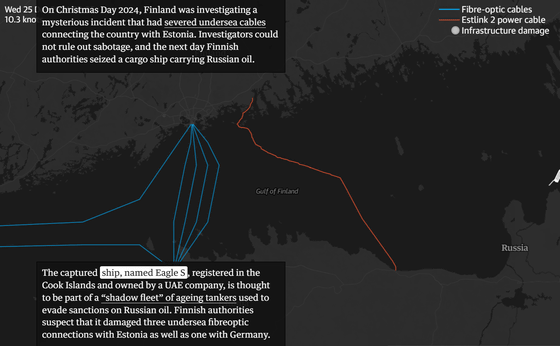
Finnish authorities said the cargo ship Eagle S, which was sailing in the Baltic Sea, was passing through the area where Estlink 2 intersected and was apparently slowing down when it was cut. In addition, because the Eagle S was passing through the sea close to the time when three of the four optical fibers were damaged, authorities have investigated the Eagle S as a tanker involved in the shadow convoy.
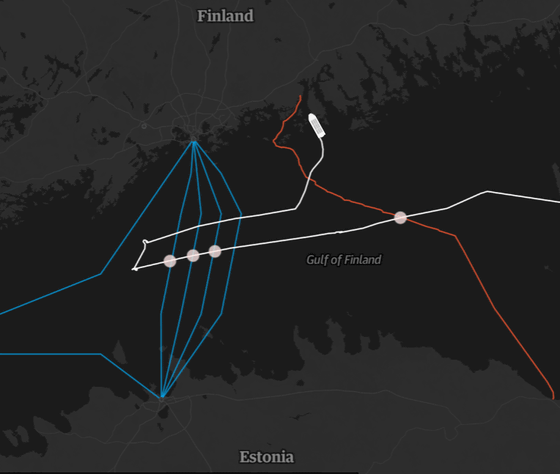
Undersea cables have become an indispensable part of modern life, from everyday life to large-scale financial transactions. This has led to growing concern among European governments over the cable severing incidents, with many officials pointing out that it was an act of sabotage by hostile forces such as Russia, a claim that the Russian government has repeatedly denied. In fact, an investigation involving security agencies from the United States and six European countries found no evidence that the ship deliberately cut the undersea cable, suggesting that the cable severing was an accident caused by an inexperienced crew on a poorly maintained ship.
Officials are beginning to think that the damage to the Baltic Sea undersea cable, suspected to be caused by Russian sabotage, was 'likely to have been an accident after all' - GIGAZINE

According to Matt Mooney, an analyst at the American cybersecurity firm Recorded Future, there are between 100 and 200 cable failures each year, most of which are accidental damage caused by anchors or fishing boats. But Mooney said the pattern of cable cuts in the Baltic Sea between 2023 and 2024 makes it more likely that they were all deliberate.
According to The Guardian, a large number of undersea cables are laid out in the Atlantic Ocean and near Europe, as follows. While both are important infrastructure that enables the Internet in each country, they are also extremely vulnerable to vandalism.
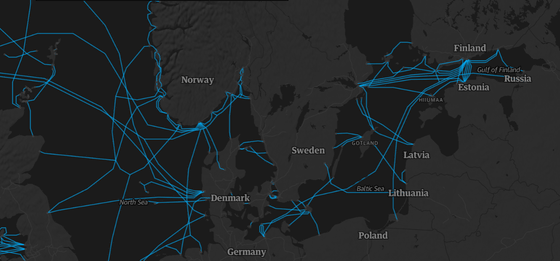
In addition, there are countless undersea cables not only in Europe but also in South America, Africa, and Asia, and there have been many cases where investigations into the cause of cable cuts revealed that a ship had been behaving suspiciously.
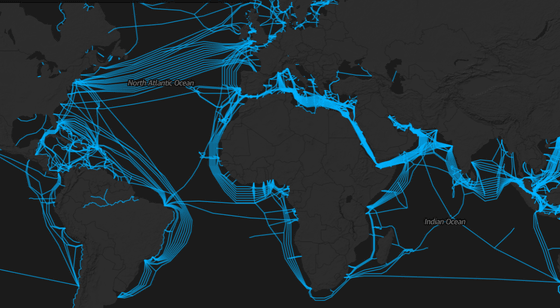
While ship logs suggest sabotage in some cases, the complex nature of international shipping makes it difficult to pinpoint clear responsibility for most of these incidents. In fact, when an undersea cable linking Finland and Estonia was damaged, the anchor of a Hong Kong cargo ship was retrieved, but the Chinese government admitted responsibility but claimed it was caused by strong winds.
Mooney said, 'Western adversaries are likely to continue to wage grey zone and hybrid warfare, a method of inflicting economic damage, undermining military power, and causing social unrest. While measures are being taken, such as European countries stepping up efforts to protect their networks and NATO launching Operation Baltic Sentry to strengthen surveillance of aircraft and ships, there is no guarantee that vast ocean areas can be protected. There are thought to be more than 500 cables in operation around the world, stretching a total distance of 1.4 million km.' He spoke of the difficulty of preparing for attacks.
In addition, Director of the European Research Center, Teja Tiirikainen, emphasized that 'while incident investigation and infrastructure defense are important, it is even more important to build a resilient system that does not rely too heavily on a single pipeline or cable.' In February 2025, the EU announced an action plan called 'Joint Communications to Strengthen the Security and Resilience of Submarine Cables,' which is expected to identify critical infrastructure and strengthen deterrent measures against cable cutting.
Related Posts:
in Note, Posted by log1e_dh





